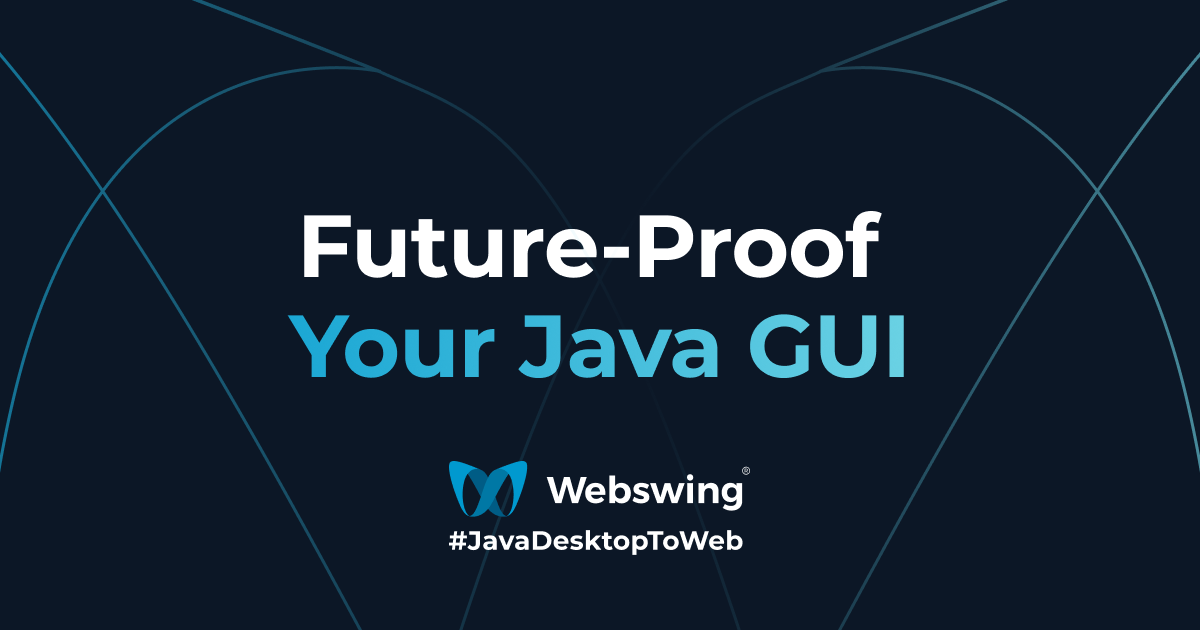Legacy Java GUI apps don’t need a rewrite. Use Webswing to modernise how your Swing, SWT, JavaFX or Netbeans app is delivered. Securely, in the browser, without code changes.
Still running a legacy Java desktop application built with Swing, JavaFX, Eclipse(SWT) or Netbeans? You’re not alone - and you’re not stuck. Webswing offers a future-proof way to modernize how your app works and feels - by moving it to the web, without rewriting a line of code.

Thousands of businesses still rely on Java GUI applications. Some were built over a decade ago, using frameworks like Swing, JavaFX, Eclipse(SWT) or Netbeans, often extended over the years with more features, integrations, and data layers. These systems might be a bit clunky, but they’re valuable and quite often indispensable. They work. They power critical operations.
The problem isn’t the application itself, it’s everything around it. You’re trying to deliver a Java Desktop application in a world where web-based apps are the norm. Users expect instant access from the browser. IT doesn’t want to maintain Java runtimes on client machines. And the old model, launching from desktop shortcuts or through Java Web Start - is dead.
If you’ve looked into migrating your Java app to the browser, you’ve probably found two paths:
- Using a RDP solution of some kind (e.g. Citrix), which is quite dead-end solution for future development
- Rewrite it from scratch using a modern JavaScript framework, which is quite overwhelming financially and time-consuming (and many other reasons why not to do it)
Webswing gives you a third option - a smarter one. It takes your existing application and delivers it as a web-based Java application with no code rewrite. No need to replace the UI, refactor your logic, or learn a new framework. Just take the app you already have, and let it run in the browser.
This approach solves your biggest modernisation pain points:
- It eliminates the need to distribute client software.
- It removes the dependency on local Java installations.
- It opens the door to integrating with modern identity systems.
- And it gives your users a smoother, more accessible experience.
In short, from a user point of view, your app becomes a web app instantly without the rewrite on your side.
What makes this a truly future-proof solution is that you're not just "patching" your legacy system - you're transforming how it fits into a modern stack. With Webswing, your Java GUI runs in the browser like any other web app. You gain all the flexibility of web delivery, while keeping the performance and business logic that made your original Java desktop application valuable in the first place. Moreover to avoid future lock-out, Webswing offers you the Webswing Modernisation Framework which lets you decide your own path and pace while further modernising your legacy application. Either you decide to Extend it, Facelift it or Rebuild it in step-by-step fashion, it lets you have that freedom.
Once your app runs through Webswing, you're no longer constrained by its desktop origins. You can modernize the UI gradually, improve navigation, polish key screens, or even start integrating web-based features on top. But none of that is required to get started. The core move of getting your Java desktop app into the browser is enough to unlock years of additional value.
This is why Webswing has become a go-to solution for teams exploring swing migration, or looking to extend the life of their Java GUI without a full rewrite. It’s stable, scalable, and actively maintained - and it speaks directly to the future of Java Swing in the browser (and JavaFx, Eclipse(SWT) and Netbeans).
If your team is still supporting a legacy Swing, JavaFx, Eclipse(SWT) and Netbeans interface, and you’ve been told the only way forward is to rebuild, pause for a while. You might not need to migrate everything all at once. You might just need to change how your app is delivered.
With Webswing, modernising your Java application becomes a matter of hours or days - not months or years.

